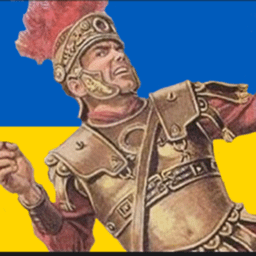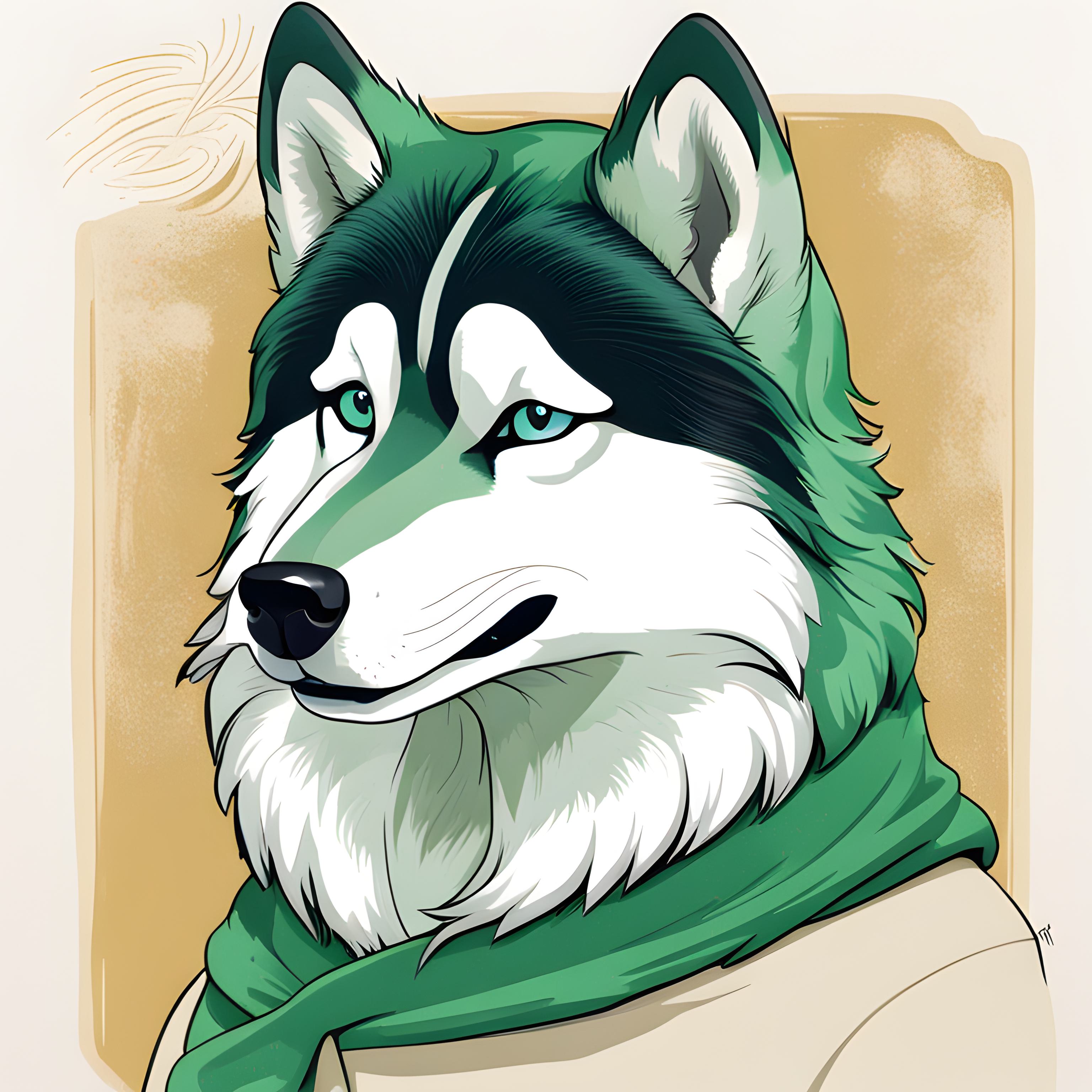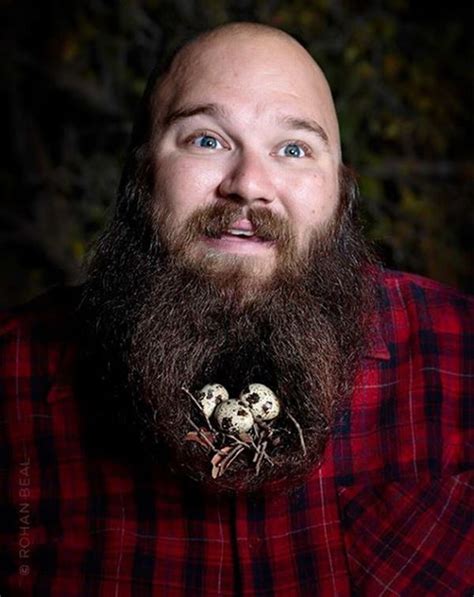Explanation: While we often associated Japanese samurai with swords, in reality, the sword fetish is a result of the long period of peace during the Edo Period, wherein the sword (and its length) was a sign of social status and a means of
causing troublespontaneously defending one’s honor from meaningless slights.Traditionally, bushido is the way of the horse and the bow. In the Sengoku Jidai, the warring states period, in the 16th century AD, European traders introduced guns to Japan. While guns were most useful in that massive amounts of peasant troops could be trained to a passable standard in a very short time, unlike bows which take years of practice, the Japanese nobility also found that they loved the newfangled iron tubes, and eagerly adopted guns not just in their armies, but in their personal usage as well. In the ~80 years of the heyday of the firearm in pre-modern Japan, an astounding number of guns of varying types and levels of decoration were made - pistols, carbines, smoothbores, rifles, you name it! The noble samurai writer and duelist Miyamoto Musashi noted in his Book Of Five Rings that the firearm, as a weapon for defending castles, was peerless.
Weren’t samurai (as warriors at least) around since the 12th century? Did the version of samurai from before the introduction of firearms not use swords? Was that more an era of naginata and the like?
Samurai in previous eras used swords, but swords were not the main weapon of the samurai class. The bow, the spear, and the naganata (as weapons suitable for use from horseback) were far more prominent.
The strong association of the samurai class with swords came about later in the Edo Period, in which case confrontations were often spur-of-the-moment and on foot, making a convenient sidearm like a sword much more important, rather than after taking care to arm and organize (such as by fetching an unwieldy weapon like a bow or naginata, and mounting up). Swords during the Edo Period also became a status symbol as the length of a sword and one’s social class were regulated by law, as the post-Sengoku Jidai military government attempted (successfully) to disarm the majority of the population to prevent uprisings or even small-scale resistance.
Eh, bushido wasn’t originally, specifically, the way of the horse and the bow.
Etymylogically, ‘bushido’ basically breaks down like this:
Bushi = Warrior
Do = Way/Path/Lifestyle of (preceeding noun)
So, fairly literally, bushido is: “Way of the Warrior.”
…
Bushido meant devout loyalty to your master (to the point of death), basically a kind of … forthrightness in combat, and a dedication to really any kind of martial combat skill, almost always firstly unarmed martial arts, and then various other specialities would be layered on top of that.
This was in opposition to those that acted as shinobi, more or less what an average Westerner thinks of as a ninja:
Stealthy, sly, underhanded, conducts sabotage and assasinations, who would lie as matter of course, would often flee a hostile situstion on their own discresion…
As opposed to the bushido way of ‘here i am, my master is blah blah, stand and fight me, and i will slay you in his name.’
…
Bushido was not distinctly, uniquely, a samurai thing, not specific to swords, katanas, wakizashis, etc.
A samurai would be the rough equivalent of a knight under a feudal lord, a kind of almost-noble-class-but-not-really person who would be in charge of other lower ranking soliders, sometimes lower ranking samurai.
They often did act as little better than the official thugs send by whatever lord to fuck with some offending person, collect taxes, etc… but they were also essentially officers in a more grand military action.
But my point here is that… basically any rank of any kind of warrior would be taught at least the basics of bushido, it wasn’t exclusive to samurai, its just that samurai tended to be a lot more hardcore about it.
And that is because… for many commoners, becoming a samurai who was very useful to, and beloved by your actually noble lord/daimyo…was a fairly reliable, though dangerous and difficult, way of climbing up the ladder of the social hierarchy.
…
Also, bushido originated no later than the Kamakura period, widely proliferated by warriors defending Japan from Mongol invasions… the Kamakura period ended about 250 years before the Sengoku Jidai began.
Many argue that it was a fairly widespread social norm going back centuries earlier.
Its just that it was not formalized into a literal, written code, untill roughly the Sengoku Jidai timeframe.
…
Bushido is more like … maybe a modern example would be the US Marine’s esprit de corp, their ethos, their guiding warrior principles.
Started out as a largely informal thing, applies to any Marine, regardless of rank, gets formalized and evovles over time.
…
So… while yes, it is true that during the Sengoku/Edo periods and afterward, guns were actually rapidly adopted by the armies of trained peasants… those peasants would have told you they were adhering to and carrying out their own idea of bushido, in diligently learning how to operate their weapon, move in formation, be a useful warrior.
And many of the old school, more traditional samurai of this period did look on guns with disgust, view them as dishonorable, or at least not as honorable, and tell you that actually no true, honest
scotsman, bushido adhering warrior uses a firearm as their primary weapon.They were sort of the praetorian class at this point, they had now come from centuries of a that psuedo-noble, samurai lineage…
…and a lot of them very much clung to the old ways and despised technology that was making them and their social class irrelevant, no longer needed.
…
Don’t mean to try and say ‘argh you’re completely wrong!’, I’m just trying to add in more context and nuance.
I suppose thats my own sense of bushido, what with having spent a decade+ practicing karate…
…wasn’t all punching and kicking, my Shihan actually directed me to study aspects of the history of martial concepts still vital to the ryu/style, actually had to write him a few reports as part of various kyu/rank promotion rites/tests, learn the sort of family tree lineage of our particular branch of karate, going all the way back to Okinawa.
To this day, a fairly large emphasis remains on getting the history correct, and honoring it, lol.
This is a very strange take on bushido, and I really don’t have the time or energy to go through it all, but most distinctly, that the code of honor we know as bushido was seriously damaged by the Mongol invasions disrupting the normal ritualistic combat of Japan, not spread or strengthened by samurai participation against the invasions; and that it was not codified until after the Sengoku Jidai, well into the Edo Period.
Well, you said ‘originally’.
As in… relating to or describing its origin.
Many, many scholars of Japanese history have argued that bushido’s origins extend further back in history than its formalization.
Yes, the pre-existing tradition of bushido was greatly challenged, by the Mongol invasions, and it rapidly changed and was reformed during/after this.
and that it was not codified until after the Sengoku Jidai, well into the Edo Period.
I agree, and I said this, but you evidently did not read me saying that.
I am not really sure how or why you find it strange than a pre-existing tradition … becomes a code… when it is formalized… that is kind of the bog standard way that most societies historically evolve.
I also find it a bit cheeky that you feel fine to characterize as ‘strange’ the understanding of bushido from someone who was literally taught and trained in an extant form of bushido for a decade.
Do you perhaps have any firsthand training in a form of Japanese martial arts?
Or do you just read about it on wikipedia?
Many, many scholars of Japanese history have argued that bushido’s origins extend further back in history than its formalization.
… yes, which is why we’re discussing the Kamakura period, since, as we’ve both noted, Bushido was not codified until much later.
I agree, and I said this, but you evidently did not read me saying that.
This you?
Its just that it was not formalized into a literal, written code, untill roughly the Sengoku Jidai timeframe.
I am not really sure how or why you find it strange than a pre-existing tradition … becomes a code… when it is formalized… that is kind of the bog standard way that most societies historically evolve.
Would you like to quote where I said I find it strange that a pre-existing tradition ‘becomes a code when it is formalized’?
I also find it a bit cheeky that you feel fine to characterize as ‘strange’ the understanding of bushido from someone who was literally taught and trained in an extant form of bushido for a decade.
There are no extant fucking ‘forms’ of bushido any more than there are extant ‘forms’ of chivalry.
Do you perhaps have any firsthand training in a form of Japanese martial arts?
Or do you just read about it on wikipedia?
I’m a fucking History major. While Japanese history was not my primary area of study, I’ve always had a distinct interest in reading on the subject, including translated contemporary works from the Edo and Meiji periods. It’s a little fucking more than wikipedia, thank you very much.
Would you like to quote where I said I find it strange that a pre-existing tradition ‘becomes a code when it is formalized’?
You seem to not be able to consider the idea that bushido existed prior to its formal codification.
Which is the mainstay of what I am talking about.
You seem anchored on the concept that bushido only began to exist upon its formalization, as well as only particularly existing as a code of honor pertaining to samurai.
There are no extant fucking ‘forms’ of bushido any more than there are extant ‘forms’ of chivalry.
Well, there are extant forms of chivalry, the concept has evolved and changed much over time, its now much less formal, and more an uncodified, general concept of how to be … correctly polite, dutiful to others, etc.
I’m a fucking History major. While Japanese history was not my primary area of study, as someone whose paternal ancestors married into a samurai family just before the abolition of the samurai class in the Meiji period…
Ok, so no, you have absolutely no experience with any modern Japanese martial art, many of which heavily emphasize not just the physical training and combat, but also very much view themselves as torch bearers of past traditions.
Bushido is a concept, a tradition, which has existed for quite a long time, morphed and changed into different variations and forms, and certainly does still persist today, in different ways.
…
Seeing as we are both on the same level of academic expertise on this:
The word Bushidō was not in wide use in medieval Japan. In the middle ages, the scope of bushi activities were described using terms such as kyūba no michi (the way of horseback archery) and yumiya toru mi no narai (customs for those who draw the bow).
Hey look! You are not completely off-base!
And I never said you were, but you got extremely defensive without ever reading all of what I wrote, before downvoting me, then undoing that, then responding, now doubling down on being extremely defensive.
The first use of Bushidō was in Kōyō gunkan, considered the “scriptures” of the Takeda-ryū school of martial arts. The writings, comprising 20 scrolls, mention Bushidō over 30 times. This text was widely disseminated within the bushi class as a martial arts instruction manual, and is thought to have played a large role in popularizing the term.
As I said, but you apparently did not read:
Don’t mean to try and say ‘argh you’re completely wrong!’, I’m just trying to add in more context and nuance.
I suppose thats my own sense of bushido, what with having spent a decade+ practicing karate…
Bushido originated with Japanese martial arts, and again, as a person who achieved Shodan kyu after 10+ years of regular training and tournament competiton, who has personally met, paid respects to, and spoken with, Mabuni Kenzo, who was at the time, the Soke of the Mabuni tradition of Shito-Ryu…
I am telling you, bushido is a living tradition, and a modified or descended form of it serves as the the fundamental philosophical basis for how a warrior should act, conduct themselves both in the dojo and outside of it.
And it is not the case that this is particular to my particular branch of karate… this is a fairly common thing, for bushido to be taught, instructed, taken seriously by many different karate students, of many different karate styles/ryus.
You seem to not be able to consider the idea that bushido existed prior to its formal codification.
Which is the mainstay of what I am talking about.
You seem anchored on the concept that bushido only began to exist upon its formalization,
Where? Where did I say any of that?
Fuck’s sake. For someone who is bitching that I supposedly didn’t read what you said (despite me literally quoting you to demonstrate my objections), you seem totally unable to read what I’ve said.
Well, there are extant forms of chivalry, the concept has evolved and changed much over time, its now much less formal, and more an uncodified, general concept of how to be … correctly polite, dutiful to others, etc.
And the relevance of that to historical concepts of chivalry is near-nil, not unlike bushido. Ironically for someone who linked an article that acknowledges the shortcomings of Bushido: The Soul of Japan, your conception of Bushido seems very in line with Nitobe Inazo’s.
Ok, so no, you have absolutely no experience with any modern Japanese martial art, many of which heavily emphasize not just the physical training and combat, but also very much view themselves as torch bearers of past traditions.
Really not seeing the relevance of this to the actual history of Bushido.
Seeing as we are both on the same level of academic expertise on this:
In general, I don’t bring up my major except when someone accuses me of, for example, garnering my knowledge from reading wikipedia, but I have to stop here and say in what fucking world is majoring in History and being a martial arts student the same fucking level of academic expertise?
The word Bushidō was not in wide use in medieval Japan. In the middle ages, the scope of bushi activities were described using terms such as kyūba no michi (the way of horseback archery) and yumiya toru mi no narai (customs for those who draw the bow).
Hey look! You are not completely off-base!
Oh cool, because you said, and I quote, unlike all the times you’ve, in this short comment chain, accused me of saying things that have no actual relevance to the fucking text I’ve typed:
Eh, bushido wasn’t originally, specifically, the way of the horse and the bow.
And I never said you were, but you got extremely defensive without ever reading all of what I wrote, before downvoting me, then undoing that, then responding, now doubling down on being extremely defensive.
Lord.
You seem to be very intentionally not actually reading the totality of what I’ve written, to the point that it would be fruitless to address you point by point, as you consistently just completely omit chunks of what I’ve written, and only respond to cherry picked parts of it.
And no, I was not saying having a black belt equates to a history degree.
I was saying neither of us have an academic speciality in the history of Japan.
I have other degrees, but they also are not relevant to the broad history of Japan…
… though I did get a perfect grade in a course on the post WW2 economic history of Japan, and I can tell you that one of the concepts we covered, that we used to analyze inter and intra corporate decision making was how bushido had been reformed into a framework that concieved of the business world as a combat zone, and to apply similar kinds of bushido principles to a battle for market share, as well as how to run a company internally.
But I am sure you will not care, as you’ve made clear that you are not interested in a good faith conversation here.
Normally, I would say ‘toodles!’, but uh, sayonara seems more fitting.
Samurai were actually pretty quick to adopt firearms, contrary to popular media. They were literally warriors and could see the value of guns.
This account of the first demonstration of firearms to a Japanese notable tickles me pink every time I hear it, because the noble basically immediately decides that the firearm is the best thing since sliced foemen, and decides that he personally wants to learn how to shoot one, and everyone in his domain ends up wanting to learn how to shoot one too.
Fuck yeah Voices of the Past is so good
This is something that somewhat bothers me about cowboy/ wild west games and even turn of the century like RDR1/2
Where is my saber? Bruh. I’m a guy on horseback in the mid-late 1800s? and I don’t have a saber backup to my sidearm?
It goes both ways. Cowboys had swords. Samurai had guns.
There was also a brief window during which samurai could plausibly show up in the American frontier. The Meiji restoration that ended the samurai’s traditional role in society kicked off at the end of the 1860s. The first Japanese embassy to the United States was under the shogunate in 1860, following Perry’s expedition and the rapid adoption of Western sailing technology by Japan
Since RDR2 is set in 1899, they could have added an elderly ex-samurai who left Japan after the end of the shogunate if they wanted
Could have been?!?!?
BRUH THIS FUCKING GUY: https://en.wikipedia.org/wiki/Frank_S._Matsura
Literally the youngest son of a disgraced samurai family from the Tokugawa Shogunate. He left for the west after both his parents died of disease.

Oh hell yeah, I had no idea about this guy. I am very much looking forward to reading about him
Extremely cool
Extremely cool. I went to a museum to see an instillation of their work. The above 6 frames actually has like… 12 more of some extremely goofy/ cartoon poses he did. He was a lighthearted, somewhat silly person.
He also did some of the best documentation of indigenous communities in the period. Like he wasn’t trying to capture the “noble savage” shit.
Army cavalrymen of the period, at least. Actual cowboys often carried guns and knives for self-defence, both against their fellow man and wildlife, but swords are less useful in that 19th century civilian context. And less concealable, for those with less-than-legal intentions.
But yeah, we get every other weapon in the Wild West and the kitchen sink in those games, an Army cavalry sabre should be matter of course at this point!
Ahem…

I want my Spanish cup-hilted rapier. I want hangers if I’m on a boat. Sabers if I’m on a horse.
Here.
Sword and pistol by my side, baby.
Sword Saint Isshin, the most historically-accurate depiction of a samurai in videogames when he takes a break from throwing lightning at you to somehow rapid-fire a matchlock pistol
Good video on the firearms of feudal Japan.
Ah, Gun Jesus, always a good choice
Why are the guns blurred out?

That’s… odd. I guess to avoid censorship algorithms wherever it was originally posted?
Is this targeted harassment?
It feels like I’m being targeted here.
Pew pew







